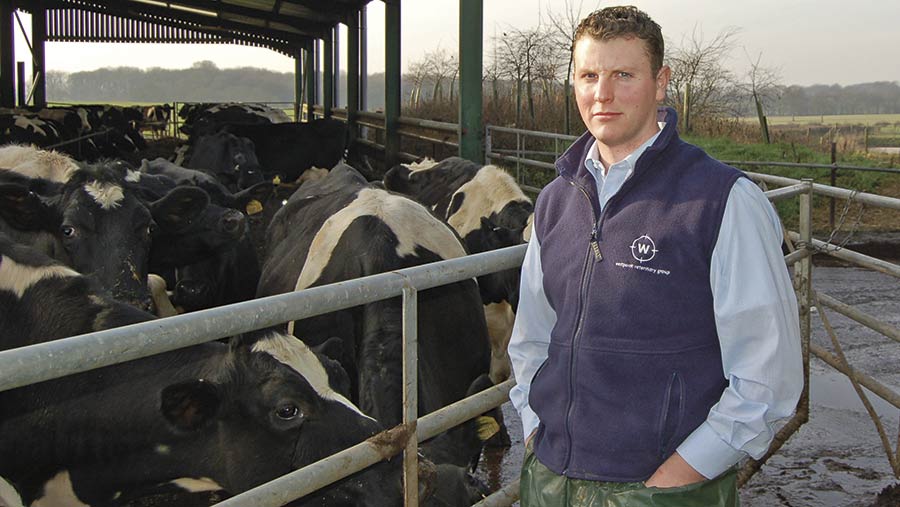How to prevent fertility issues in dairy cows due to lameness
Lameness in dairy cows has an adverse effect on fertility as they less likely to exhibit heat, and therefore less likely to be inseminated.
It has been shown that when lameness occurs within 14 days of a service period, there is a 25% reduction in the chances of a cow becoming pregnant.
James Dixon, a vet for Westpoint, Ashbourne, Derbyshire explains why this issue occurs and how to deal with it.

James Dixon, Westpoint, Ashbourne, Derbyshire
See also: 4 ways to improve cow flow and reduce lameness
What can be done about this?
On most farms, a large amount of effort goes into getting cows served, and pregnant, in the first 100 days after calving.
Reducing the incidence or severity of lameness in this period will have a fertility benefit as well as offering improved yield, health and welfare in general.
Prevention of early lactation lameness is all part of achieving a successful transition, whether it be a heifer calving into the herd for the first time, or cow entering her next lactation; this is an absolutely key time.
From a lameness perspective, there are two main areas of focus: claw horn lesions and infectious lameness.
Tips on how to reduce claw horn and infectious lameness
Claw horn lesions
These are predominantly seen in the form of sole haemorrhage, sole ulcers and white line disease and can be both painful and debilitating for the affected cow.
Key points for preventing and treating claw horn lesions include:
- Effective body condition management avoiding either thin cows, or fat cows that will be prone to rapid weight loss
- Ample feed space in close-up and fresh-calved groups to maximise feed intake. Target here should be at least 75cm a cow, but ideally more
- Good cow comfort to encourage lying times, especially in heifers who will benefit from access to a straw yard for the first 48 hours after calving
- Consider using pain relief for any cow that has a prolonged or assisted calving
- Use regular herd mobility scoring to pick up lameness as early as possible and prioritise early lactation cows (heifers especially) for treatment
- Treating claw horn lesions with a trim, block and Nsaid injection will maximise cure rates.
Infectious lameness
The main form of infectious lameness seen in dairy cows is digital dermatitis (DD), which is seen in almost all herds now throughout the country.
DD is a significant problem in lactation cows, but will also occur in both youngstock and dry cows and it has been shown that a heifer affected with DD before calving is likely to have it more severely once she enters the milking herd.
This all means that in order to prevent DD in early lactation cows, we need a whole-herd approach.
James Dixon strongly advocates farmers discuss this with a vet and (where applicable) a hoof trimmer, and on this basis formulate a DD control plan together for the farm.
Key components of a good DD control plan:
- Inspection, recording and thorough treatment of clinical cases using an agreed treatment protocol
- Good foot-bathing set-up allowing all cows to access a clean, correctly prepared solution at the right concentration
- Agreed foot-bathing protocol to cover youngstock and dry cows as well as the milking herd
- Culling of persistent offenders or carrier cows to prevent spread within the herd.
